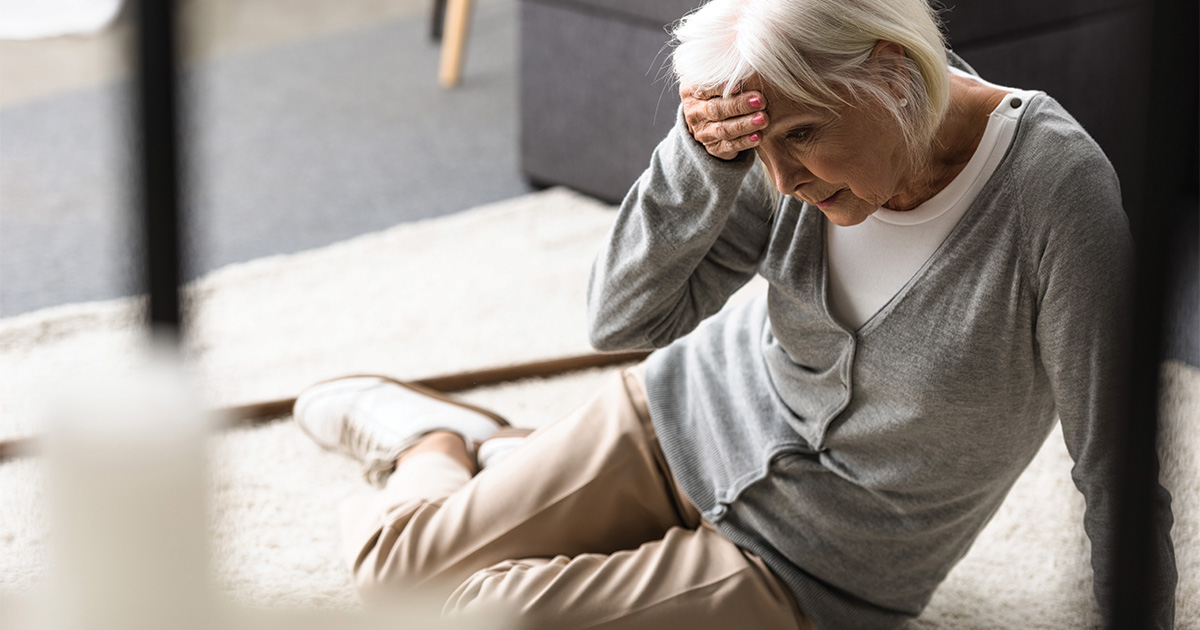
Falls are a leading cause of injury for adults ages 65 and older and a common reason for visiting the emergency department. A simple accident such as slipping on a rug or bumping into furniture can result in health issues, including fracture, that may become more difficult to manage as you age.
“It becomes a vicious cycle that once a person falls, they become fearful of falling again ─ whether they are worried about the pain or concerned with mobility and independence ─ so then we see patients reduce their activity, making it a greater chance that they will fall again,” said Trude Rodli-Culver, physical therapist at McLaren Greater Lansing Rehabilitation Center.
Fear of falling affects nearly 70% of those who have fallen and 40% of those who have not. This fear may lead to avoidance of doing activities including walking, shopping, and taking part in other social events, oftentimes leading to a reduced quality of life.
Most falls are linked to a combination of both intrinsic and extrinsic risk factors. Individual influences related to changes in muscle mass, hearing, vision, and blood pressure can impact safe navigation of your environment. Additional factors including the design of your home, the footwear you choose, and medication use can play a role in contributing to risk.
However, there are simple tips you can do to help reduce your risk of falling.
Exercise
“Keeping your body active is so important in improving muscle and bone density, along with keeping your joints and ligaments flexible,” said Rodli-Culver.
Try doing balance and strength training exercises through the use of weights and resistance bands. Rodli-Culver recommends that anyone beginning a new activity start slow and work up to more repetitions and weight over time.
“Start out by doing an exercise program for 10 to 15 minutes and see how you feel the next day,” said Rodli-Culver. “Make sure to take rest days and do not overdo it.”
Integrating exercises that improve balance can also help with the risk of falling and should be done while standing. Rodli-Culver advised that all these exercises should be in a safe environment next to a wall or handrail to grab onto as needed.
Get Your Home Ready
“Ensuring your home is free of clutter is a really simple way to prevent injuries,” said Rodli-Culver. “Make sure pet toys are put away, extra shoes and other items are picked off the floor, and if you have any rugs, make sure they are nonslip and not bunched up.”
Wearing appropriate footwear that is supportive, has low heel height, and good traction can also prevent the risk of falling within the household and can improve balance. Rodli-Culver also recommends installing handrails in bathrooms and stairs.
Manage Your Overall Health
Following a proper diet to ensure your body is getting the nutrients it needs to keep your bones and muscles strong is important.
“In addition, make sure to schedule regular doctor and eye care visits and talk to them about any problems you are noticing,” said Rodli-Culver. “Certain medications can also affect your balance and vision, so knowing the side effects and dosage are all topics you should discuss at these appointments.”
Get an Annual Fall Risk Assessment
Physical therapy can help improve balance, stability, and gain confidence. McLaren Greater Lansing Rehabilitation can perform a comprehensive evaluation, acessing your strength, flexibility, and mobility working with you towards individualized goals.
If you feel physical therapy may help, speak with your doctor about a referral. To learn more about rehabilitation services including physical and occupational therapies at McLaren, click here.
To read more articles on health and wellness, click here.